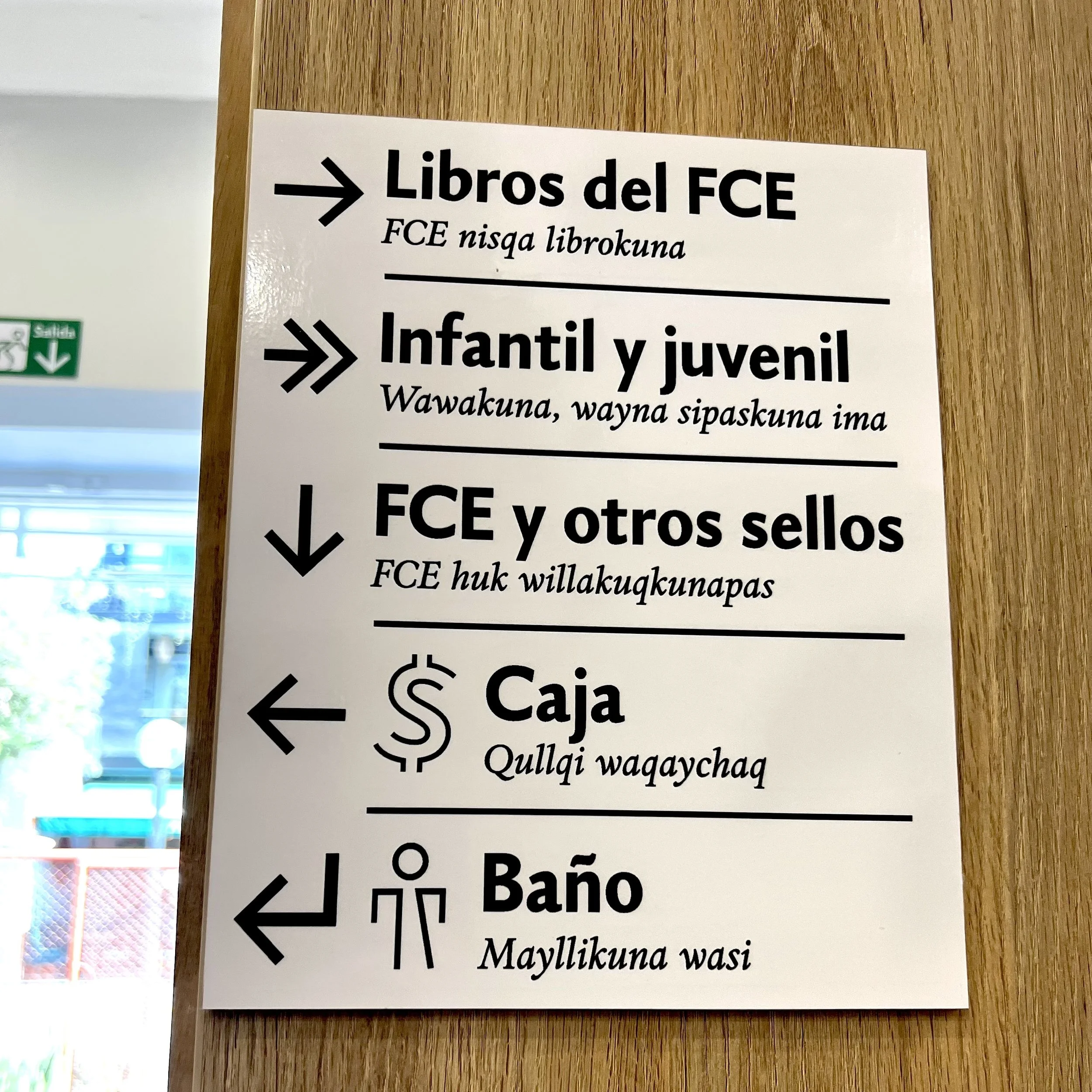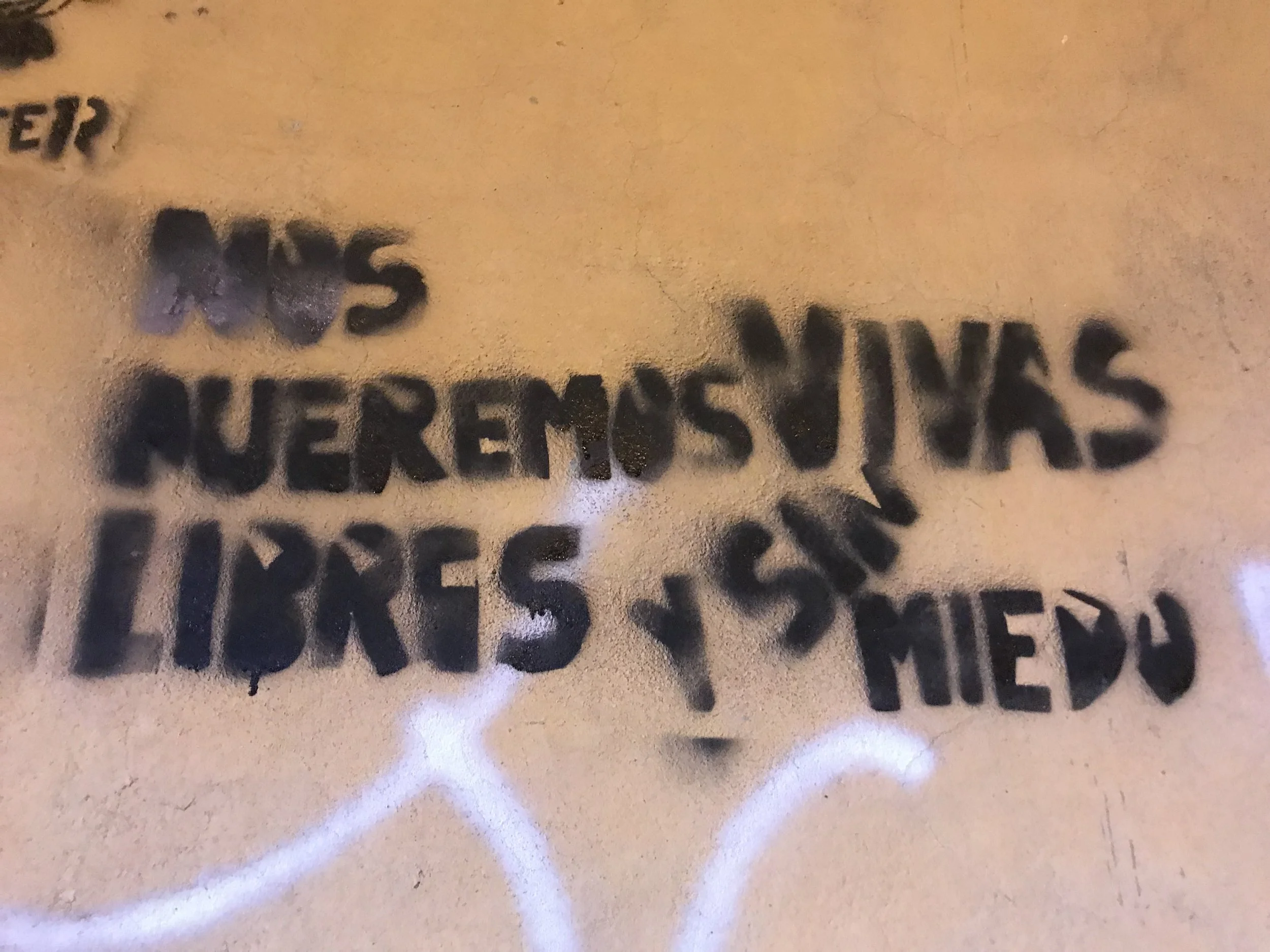Sample Courses and Course Descriptions:
Migration and Mobility in the Global Hispanophone (Undergraduate Survey; Georgetown University, Spring 2026)
This course considers film, literature, performance, music, and visual culture from across the Spanish-speaking world that treat questions of migration and human mobility. Taking a comparative and transdisciplinary approach, students are invited to consider how these creative works establish points of divergence and continuity relative to the following guiding questions: What does it mean to migrate, to be the child of migrants, or to form part of a given diaspora? How might we define the supposed ‘migrant subject’? What forms of mobility and immobility, broadly defined, accompany distinct experiences of migration, broadly defined? What is the role of cultural production and specific creative forms—film, literature, performance, etc. —in articulating, and even theorizing, the ‘answers’ to any one of these questions? Across the course, students engage with materials from Latin America, Spain, the United States, and Spanish-speaking Africa and Asia.
Literature and Culture of the Andes (Undergraduate Survey; Georgetown University, Fall 2025)
This course introduces students to twentieth- and twenty-first-century Andean literature, film, and cultural production, with an emphasis on questions of indigeneity, migration, and place-based identities. Course materials move across the highlands of Bolivia, Chile, Ecuador, and Peru in the form of novels, short stories, poetry, film, rap, photography, architecture, and visual art. Central to our in-class discussions will be the following question: What does it mean to be “Andean”? How does Andean cultural production uphold, construct, and/or deconstruct notions of “Andeanness”? How do questions of indigeneity, migration, and geographic situatedness inform renderings of the Andes, past and present? How might cultural production support or contest a sense of regional, trans-Andean identity?
Women (Re) Write the Hemisphere (Graduate/Advanced Undergraduate Seminar; Georgetown University, Spring 2025)
Latin America’s mid-century literary “Boom” was infamously male-centric, privileging the voices of authors like Mario Vargas Llosa, Julio Cortázar, and Carlos Fuentes, while sidelining those of writers like Rosario Castellanos, María Luisa Bombal, and Elena Garro. In recent years, we have seen the emergence of what many have called a new Latin American Boom, one defined by the overwhelming presence of women writers. While these writers may themselves contest the use of the term Boom, it is undeniable that women are at the forefront of twenty-first-century Latin American literature and, moreover, that their prose marks a departure from—if not a contestation of—that written by an earlier generation of male Boom authors. “Women (Re)Write the Hemisphere” considers the novels and book-length works of Latin American women who were pushed to the margins of the region’s “first Boom,” as well as those who are, on the other hand, at the forefront of a powerful “second Boom.” Along the way, we will engage a wide range of secondary texts aimed at expanding students’ “theoretical toolboxes” and helping them situate each author’s respective literary, ideological, and political projects. While we will aim to read each work as a powerful literary document in an of itself—versus an example of “women’s literature”—we will nevertheless attend to the following guiding questions: Where and how does the female gaze emerge? What does the female gaze do in each text and to what ends? How does this gaze interact with formal experimentation?
What is Contemporary Latin American Literature (Graduate Seminar; University of Oklahoma, Spring 2024)
Organized around a series of contemporary novels, literary criticism, and theoretical texts, our course seeks to develop a working understanding of contemporary Latin American literature. While an unwieldly, virtually impossible question, “what is contemporary Latin American literature?” asks us to consider how a new generation of Latin American novelists are writing their contemporary moment and to what ends. Working comparatively across the hemisphere, we will look for points of contrast and convergence, considering both the formal strategies employed by Latin American authors as well as the specific “miradas” (gazes), ideological positionings, and political postures that inform their work. We will also draw heavily on critical and theoretical texts that engage the following fields of inquiry: Decolonial Theory; Gender Studies; Queer Theory; Critical Race Theory; Memory Studies; Indigenous Studies; and Translation Studies. Many of these secondary texts are the work of leading voices within the US-Academy, offering students interested in pursuing a career in US-Academia a taste of the field and the sort of research produced within it. To this end, our seminar will also focus heavily on professionalization. Over the course of the semester, students will write conference abstracts and papers; present a conference paper at a mock conference; develop their papers into article-length, publishable essays; and discuss possible venues for publication. By the end of the semester, students will have produced a conference paper that may be presented at a national or international conference, and an academic article that may be revised for publication.
Hemispheric Indigeneities of Abiayala (Graduate/Advanced Undergraduate Seminar; Georgetown University, Spring 2026)
This course considers literature, film, essay, music, and visual culture from across Abiayala—what we might refer to as ‘the Americas’—produced by Indigenous and Native authors, artists, practitioners, and intellectuals. Taking a comparative approach that rejects settler divides between ‘Latin America,’ the United States, and Canada, students engage with key debates from Indigenous Studies and Native American Studies while also considering how various cultural objects articulate contemporary and transhistorical experiences of coloniality, dispossession, racism and racialization, political violence, environmental degradation, and erasure. Central to our in-class discussions is the tracing of nodes of divergence and continuity, as well as the examination of how specific creative genres and formal techniques are wielded to simultaneously reject settler impositions and advance alternative political futures. .
Indigenous Literatures of Latin America (Undergraduate Survey; Georgetown University, Fall 2025)
This course introduces students to twentieth- and twenty-first-century Indigenous literatures from across Latin America (Abiayala). Over the course of the semester, we will engage with a variety of primary and secondary materials that prompt us to consider the following questions: What is ‘Indigenous literature’? What does it mean to write as an ‘Indigenous author’? How might Indigenous authors engage literature to contest stereotyped notions of indigeneity and Indigenous authorship? What ideological and political projects do these literatures put forth? How do Indigenous authors engage various literary forms and genres to develop these projects? Given the wide range of materials with which we will engage, our work will be highly comparative, with students asked to make connections and identify tensions across and between literary works and the national contexts within which they were produced.
Migration and Bordering in Latin American Cultural Production (Graduate/Advanced Undergraduate Seminar; Georgetown University, Fall 2024)
What is a border? What is “bordering”? How do borders relate to race, coloniality, and imperialism? How do literature and film, among other mediums, both engage with and challenge transnational conversations around migration and borders? “Migration and Bordering” considers these and other questions via an examination of contemporary literature, film, performance, and visual art from two distinct regional contexts that are heavily defined by migratory processes: Mexico and Central America (first half of the semester), and the Peru (second half). Dialoguing with major works of Border Theory from Latin America and beyond, our course considers cultural production’s role in challenging, dismantling, reconfiguring, and, at times, upholding borders of all kinds (national, international, linguistic, socioeconomic, racial, etc.). We will also consider how various forms of migration—namely international and internal—shape these borders and those who cross them. Our approach to these questions will be comparative and transdisciplinary, drawing from a number of fields and critical approaches. At the same time, we will consider what literature, film, performance, and the visual arts might tell us about borders and bordering that Social Science research and raw data, for example, cannot. To this end, students will produce various short reading essays, a “defining key terms” midterm assignment, and a final article-length paper aimed at preparing them to make compelling interventions into the interdisciplinary field of Migration and Border Studies as humanities scholars. Readings and viewing






